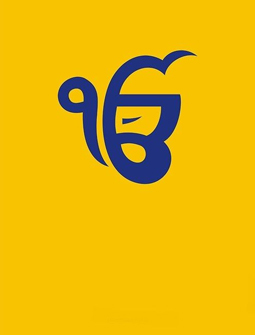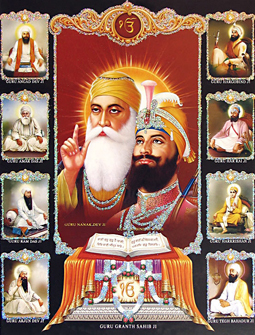


Sikh simply means “seeker of truth.” Sikh Dharma is a spiritual path for those who are looking to establish an enduring connection to their Divine truth within. Like all spiritual traditions, Sikh Dharma has its lineage and legacy, guidelines and philosophies, its Masters, its saints and history. But primarily, Sikh Dharma offers a down-to-earth spiritual path for every-day people. It doesn’t matter what your spiritual orientation is. Or what culture or background you belong to. Any person can do these practices to help them experience their own Divinity and Infinity.
Sikhs strive to train the mind and the senses to recognize the Divine Light within oneself and within all of creation and to be of service to others.
A Sikh lives a normal life. Single or married. With children or without. In work life and in social life, as Sikhs we strive to:

When Guru Nanak emerged from his 3-day experience of Samadhi (union with the Divine) in the river, his first words were, “there is no Hindu, there is no Muslim”. From that simple statement Guru Nanak declared the belief that there is only one God – then it follows that since there can only be one God (Creator of the universe), then people of all faiths actually worship the same embodiment of the Divine.
Guru Nanak extended this doctrine to include the idea that, if all people worship the same God, then all people are equal. Ideally, this also applies to all people, regardless of caste, color, gender, etc.
It flows from this belief that if all people are equal, then all paths to God, all ways of worship are also equal. Sikhs do not believe that their way is the only way and, therefore, Sikhs do not proselytize their ideology or beliefs.

The Guru is many things and can be experienced in many forms; or even without form. The Siri Singh Sahib often translated Guru to mean, that which takes you from the darkness to the light. “Guru” is often thought to refer to a teacher, such as with a teacher of classical Indian music. But even when referring to such a teacher, it is understood that the Guru’s role is to train the student in all facets of being. In the full definition, Guru is an infinite resource of teaching, healing and guidance.
The spiritual path can be difficult to navigate alone. The role of the Guru here is to be the “boat” that crosses the treacherous waters, that connects our limited self to our infinite self; to be the “doorway” that opens our understanding to the expanded vision of the path forward; to be the “beacon of light” leading our ship to safe harbor. By the Grace of the Guru, the door opens – our ears open, we hear the call and we respond to it.
Often, you may first experience the Guru in the form of sudden or fleeting insight or guidance. This can be categorized as the Nirgun (formless) Guru. Or this can be said to be the “hand of the Guru”. You feel as though there is a divine intervention. It can be as mundane as a revealing comment spoken by another person in a casual conversation that changes your understanding of an important aspect of your life. Or it can be in a sudden change in the direction of events where you are spared some seemingly-unavoidable unpleasant outcome.
There is also the Sargun (fully-manifest) Guru where this source of divine connection is continuously present in someone or something. Many people may not recognize, with full understanding, the depth and authenticity of such a Guru. In this form the Guru delivers God’s Truth with clarity and depth, and is the source of continued and inspired regeneration of hope – hope in ourselves and hope in the world. In this form the Guru inspires and guides all to their highest destiny. The relationship between Guru and Chela (student) has been highly developed in India over the last couple of thousand years. To find a Guru in that system there was a lot of importance put on vetting the pedigree of a Guru, to be sure that his Guru, and his Guru’s Guru were of recognized value and importance. There were plenty of opportunities to choose poorly; to unwittingly choose a Guru stuck in their own struggle with materialism, hence limiting the student’s progress to Infinity.

The concept of “Mukti” or Liberation is recognized within Sikh Dharma to include both the freedom from the cycle of birth and death, and the absorption or surrender into a state of merger with the divine. In the world at large this is often referred to by other words; such as Samadhi or Nirvana. In Sikh Dharma this concept is broadly interpreted to include other concepts; such as Shuniya (deep inner stillness) and Sahej (deep acceptance or ease).
Although it is accepted that the efforts of self-discipline, meditative practice and selfless service are all very helpful in progressing toward this state of liberation, above all is continual devotion and focus on the Divine. Sikh Dharma is essentially a Bhakti (devotional) path. Therefore, it is only through Divine Grace that one attains the release of Mukti. The attaining of this Grace is never achieved directly, but instead is a byproduct of one’s devotional efforts.
The ideal is to attain this state in this lifetime (Jivanmukt) rather than to look to one’s death as the time of entry into this state. As the effacing of one’s ego is one of the primary goals along this path, in Sikh Dharma one should not be so self-absorbed in this pursuit, but rather one should be focused on serving others and serving the Divine Will; and if, in doing so, liberation is attained, that is a gift or blessing.